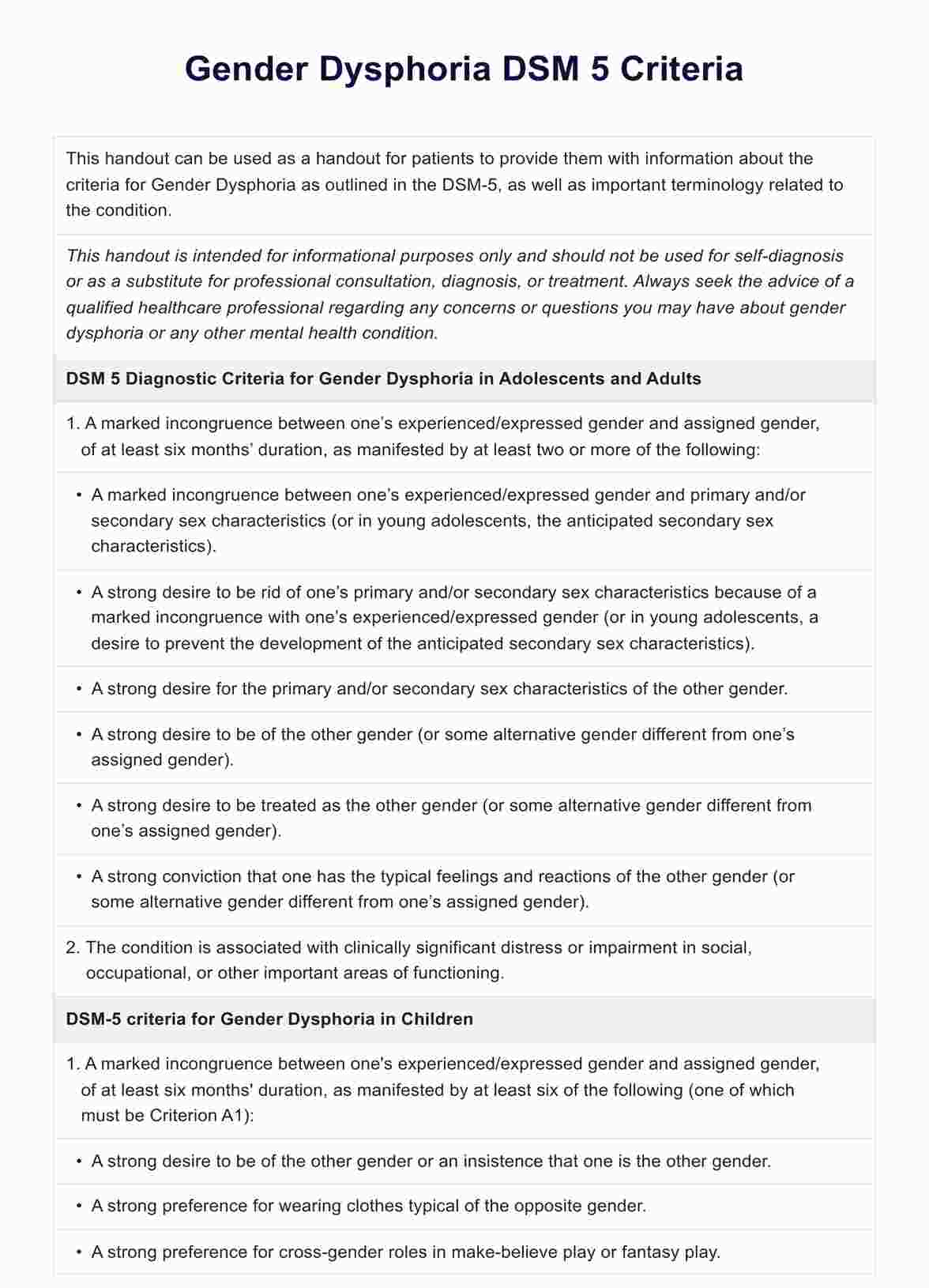To qualify for a diagnosis of gender dysphoria, individuals must experience a marked incongruence between their experienced gender and the gender assigned at birth, causing significant distress or impairment in critical areas of functioning.

Gender Dysphoria DSM 5 Criteria
Explore the DSM-5 criteria for Gender Dysphoria with our guide and template, designed to assist with understanding and accurate diagnosis.
Gender Dysphoria DSM 5 Criteria Template
Commonly asked questions
Gender dysphoria can affect various aspects of life, including mental health, social interactions, and personal relationships, leading to distress, isolation, and challenges in expressing one's true gender identity.
Psychologists diagnose gender dysphoria through clinical interviews and assessments, evaluating the individual's gender identity, experiences of incongruence, and the impact on their mental health and daily functioning based on the DSM-5 criteria.
EHR and practice management software
Get started for free
*No credit card required
Free
$0/usd
Unlimited clients
Telehealth
1GB of storage
Client portal text
Automated billing and online payments











